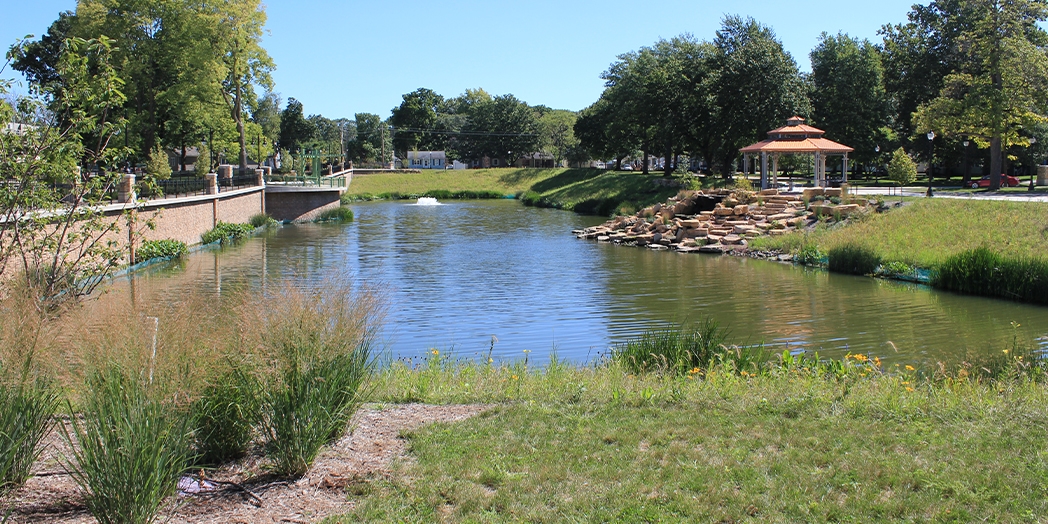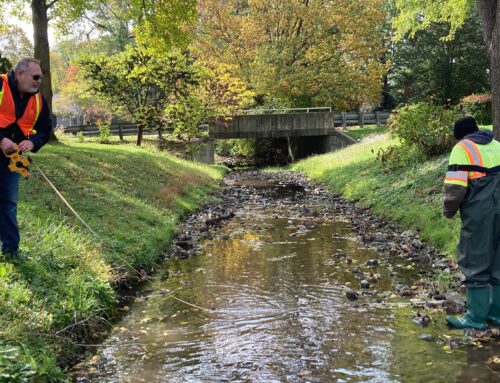Clark Dietz water resource Engineer and Project Manager, Chris Gutkowski, PE, CFM, ENV SP, recently presented Champaign’s 20-Year Stormwater Journey: Copper Slough Watershed Master Plan to Garden Hills and Beyond, at The Conservation Foundation’s Beyond the Basics 2024 Conference.
Chris’s presentation explores more than how Clark Dietz and the City of Champaign, Illinois designed and implemented stormwater resilience, but how economic, social, and environmental benefits were realized in these meticulously planned stormwater infrastructure improvement projects.
Key watershed issues the City faced when beginning this journey included rapid development alongside older neighborhoods with minimal stormwater detention and conveyance deficiencies. Various commercial and industrial development needed to be considered as well when Clark Dietz and Champaign investigated the need for future development controls that would enable continued growth.
In the clip below, Chris expands upon the value of stormwater infrastructure in a public environment. “[Another] aspect is extracting additional value from public engagement,” says Gutkowski, “The public is involved very early on in these projects.”
To view the entire presentation, please visit our YouTube channel.
The following timeline describes the highlights of Champaign’s stormwater journey over the past two decades:
In 2007, Clark Dietz completed a study of a 10-square-mile watershed on Champaign’s west side, a largely urbanized area with significant growth opportunity within undeveloped portions of the watershed. The project gave the City a tool to identify hydraulic capacity of the Copper Slough channel and trunk storm sewers, and provided a roadmap for managing channel improvements and stormwater management for future development, and to enhance surface water quality. The project included a complete streambank assessment, used to prioritize channel improvements, and included hydrologic and hydraulic analysis of the entire watershed. The analysis focused on the open channel and trunk storm sewers with direct discharges to the channel.
In 2015, Champaign again retained Clark Dietz to study the West Washington Street drainage basin, situated within the Copper Slough Watershed, with a goal of identifying solutions to alleviate localized flooding. The study resulted in a three-phase plan for improvements consisting of a combination of storm sewer improvements, stormwater retention basins, and pavement restoration to improve the flood protection level in the watershed from a 1-year level to a 40-year level. The primary feature of Phase 1 was an 11-acre-feet detention basin which holds approximately 28% of the 40 acre-feet of storage volume needed to achieve the 40-year flood protection level. Storm sewer improvements along Washington Street were also done. While the primary goal was to improve flood protection levels, a secondary goal was to create a park-like area around the retention basin to be utilized by the community for recreational purposes.
In 2018 Clark Dietz provided design and construction phase services for Phase 2 of drainage improvements consisting of two new detention basins, new storm sewers and pavement, improved lighting, and development of recreational park amenities in addition to the flood control measures.
In 2021, Clark Dietz completed the construction phase services for their design of Phase 3 of the Washington Street drainage improvements which included PCC pavement over an aggregate base course; concrete curbs and gutters; storm sewers and associated drainage structures; water main replacement; PCC sidewalks and driveways; street lighting; sanitary and storm sewer replacements; and sewer lining.





